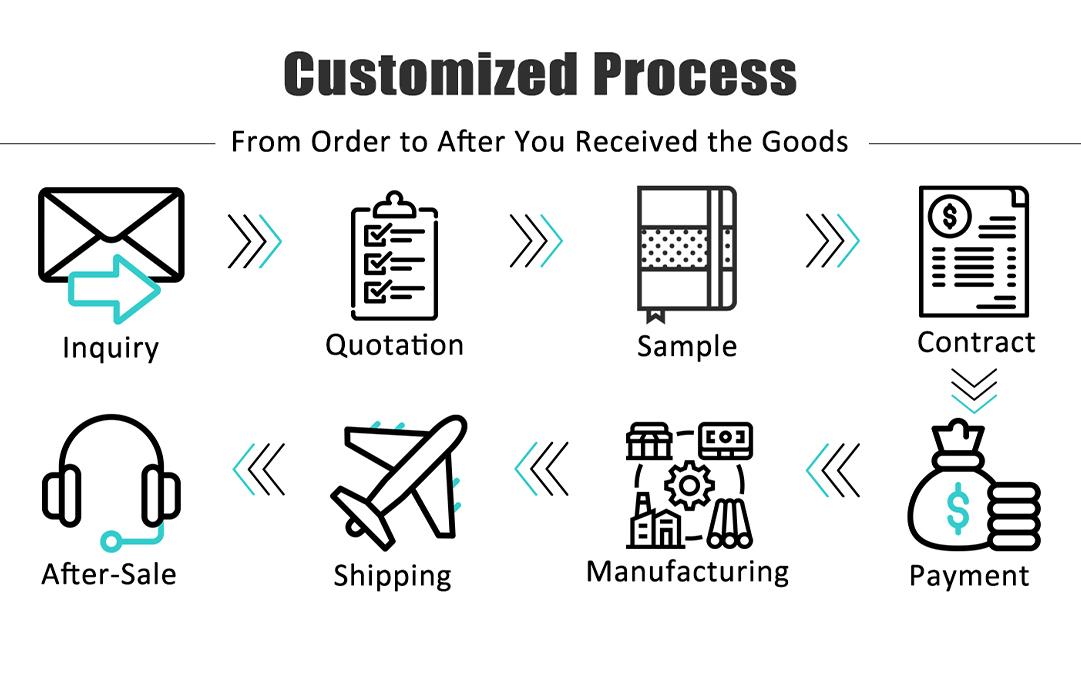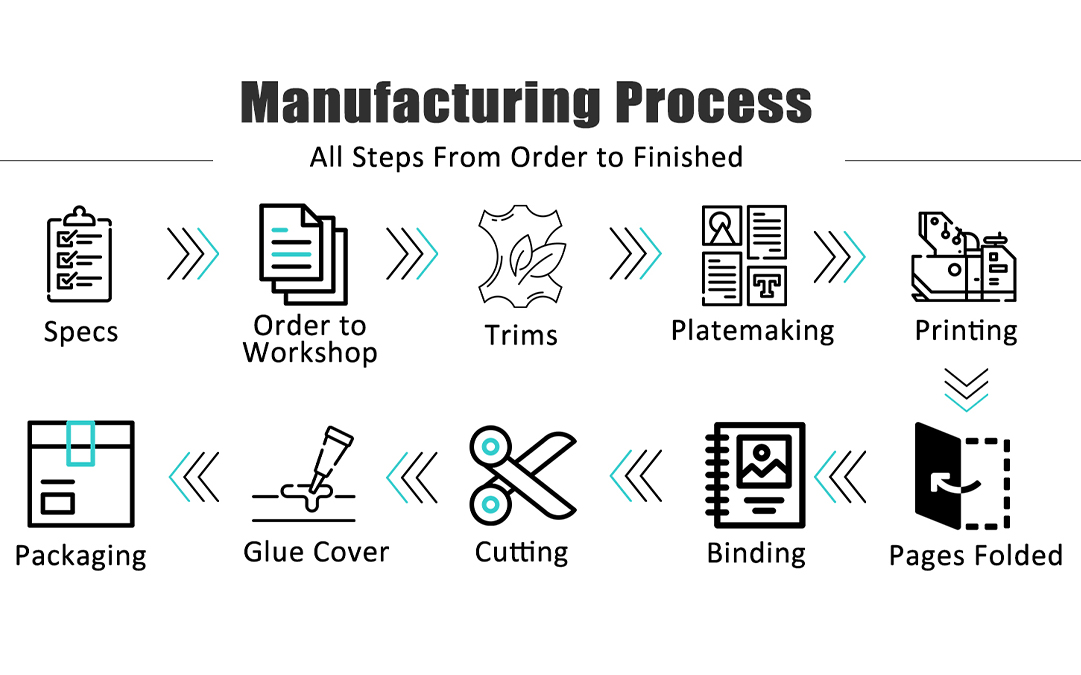What Quality Control Measures Should I Implement to Uphold the Highest Standards in Premium Notebook Printing?
As a Premium Notebook manufacturer dedicated to producing high-quality products, I understand that maintaining the highest standards is crucial. Quality control is a multi-faceted process that encompasses every stage of production, from sourcing materials to the final inspection. Here, I’ll share the key quality control measures I implement to ensure my notebooks stand out in the market.
Understanding Material Quality
One of the fundamental aspects of producing premium notebooks is the quality of materials used. I place a high priority on sourcing the best paper and cover materials. My suppliers are meticulously selected based on their ability to meet stringent standards for texture, durability, and sustainability. Before any material is approved for production, it undergoes rigorous testing to verify its quality. These tests include checking for consistency in texture, weight, and color, as well as ensuring the materials are free from any defects.
I also believe in building strong relationships with my suppliers. Regular visits to their facilities allow me to inspect the production processes and ensure they align with my quality expectations. By maintaining these standards, I ensure that every notebook I produce has a premium feel and is durable enough to withstand everyday use.
Investing in Advanced Printing Technology
In the notebook printing industry, the quality of print can make or break a product. To achieve the finest print quality, I invest in state-of-the-art printing technology. This includes the latest printers that offer high-resolution outputs, precise color reproduction, and efficient production speeds. Advanced printing technology allows me to produce notebooks with sharp images, vibrant colors, and clear text, which are essential for both aesthetic appeal and functionality.
However, investing in advanced technology is just the beginning. Regular maintenance and calibration of these machines are crucial to prevent any deviations in print quality. I have a dedicated team responsible for routinely checking the equipment and ensuring it operates at its optimal performance. This proactive approach helps in avoiding any unexpected breakdowns and maintaining consistent quality across all print batches.
Implementing Rigorous Proofing Procedures
Proofing is a critical step in the printing process that ensures the final product is free from errors. Before proceeding with full-scale printing, I implement thorough proofing procedures. This involves creating sample prints, which are carefully reviewed for any mistakes in design, alignment, and color accuracy. I take the time to scrutinize every detail of the sample, from the cover design to the internal pages.
By catching mistakes early in the proofing stage, I can prevent costly reprints and ensure that the final product meets my high standards. I also involve my clients in the proofing process, providing them with samples to review and approve. This collaborative approach not only helps in identifying any overlooked issues but also ensures that the final product aligns with the client’s vision and expectations.
Establishing a Comprehensive Quality Control Checklist
A systematic approach to quality control is essential for maintaining high standards. I have developed a comprehensive quality control checklist that covers every aspect of the production process. This checklist includes detailed criteria for evaluating paper quality, print clarity, binding strength, and packaging integrity. Each step in the production process is meticulously checked against this list to ensure consistency and excellence.
The quality control checklist is an evolving document that is regularly updated based on feedback and new industry standards. By adhering to this checklist, I can systematically address any potential issues and ensure that every notebook that leaves my facility meets the highest standards of quality. This structured approach helps in maintaining a uniform level of quality across all products, thereby enhancing customer satisfaction and brand reputation.
Training and Empowering Staff
Quality control is not solely about the processes and equipment; it also involves the people behind the production. I place great emphasis on training and empowering my staff with the knowledge and skills needed to uphold quality standards. Regular training sessions are conducted to keep the team updated on the latest quality control techniques and industry standards.
By fostering a culture of quality within my company, I ensure that every team member is committed to producing the best possible product. I encourage my staff to take ownership of their roles and empower them to identify and address potential issues proactively. This collaborative and knowledgeable workforce is a cornerstone of my quality control strategy, ensuring that high standards are maintained throughout the production process.
Conducting Regular Audits
To assess the effectiveness of my quality control measures, I conduct regular internal audits. These audits involve a thorough review of the entire production process, from material sourcing to final inspection. The purpose of these audits is to identify any gaps or areas for improvement in the existing quality control procedures.
During the audits, I evaluate the compliance of each step with the established standards and look for opportunities to enhance efficiency and quality. The findings from these audits are used to refine and update the quality control processes, ensuring they remain relevant and effective. By regularly reviewing and updating my procedures, I can adapt to new challenges and continuously improve the quality of my notebooks.
Utilizing Customer Feedback
Customer feedback is an invaluable resource for improving product quality. I actively seek feedback from my customers to understand their experiences and expectations. This feedback comes from various sources, including customer reviews, surveys, and direct communication. By listening to my customers, I gain valuable insights into what works well and what needs improvement.
I analyze this feedback to identify common themes and areas where enhancements can be made. For example, if multiple customers mention issues with the binding, I will investigate and address this aspect of the production process. Implementing changes based on customer feedback not only improves the quality of my notebooks but also strengthens customer loyalty and trust in my brand.
Maintaining Clean and Organized Production Facilities
A clean and organized workspace is crucial for maintaining high-quality standards in notebook production. I ensure that my production facilities are well-maintained, with proper storage for materials and tools. Cleanliness reduces the risk of contamination and defects, which can adversely affect the quality of the final product.
I implement strict housekeeping protocols that include regular cleaning schedules and proper waste management practices. An organized production environment also enhances efficiency, allowing my team to work more effectively and produce consistent, high-quality results. By maintaining a clean and organized facility, I create a conducive environment for upholding the highest standards in notebook production.
Implementing Sustainability Practices
In today’s environmentally conscious world, upholding high standards also means being responsible towards the environment. I integrate sustainable practices into my production process to minimize the environmental impact. This includes using recycled materials, reducing waste, and implementing energy-efficient practices.
Sustainability is not just about environmental responsibility; it also appeals to eco-conscious customers who prefer brands that share their values. By committing to sustainability, I enhance the overall quality and appeal of my notebooks. This commitment also aligns with my goal of creating products that are not only high in quality but also ethically produced.
Continuous Improvement and Innovation
Quality control is an ongoing process of improvement and innovation. I stay informed about industry trends and new technologies that can enhance my production capabilities. This involves attending industry conferences, participating in workshops, and engaging with other professionals in the field.
By continuously seeking ways to improve, I ensure that my notebooks remain at the forefront of quality and innovation. This proactive approach allows me to adapt to changing market demands and consistently deliver products that exceed customer expectations. Continuous improvement is a core principle of my quality control strategy, driving me to strive for excellence in every aspect of notebook production.
By implementing these quality control measures, I ensure that every notebook I produce upholds the highest standards. From sourcing the finest materials to embracing continuous improvement, each step is carefully designed to deliver a product that stands out in quality and reliability. This commitment to excellence not only enhances customer satisfaction but also strengthens my brand’s reputation in the competitive notebook printing industry.
Contact Us: Ms. Rimo Lau WhatsApp Me
Whatsapp: 0086 18336352791 – WeChat&Phone
Website: www.fullcolorprintstationery.com
E-Mail: [email protected]





